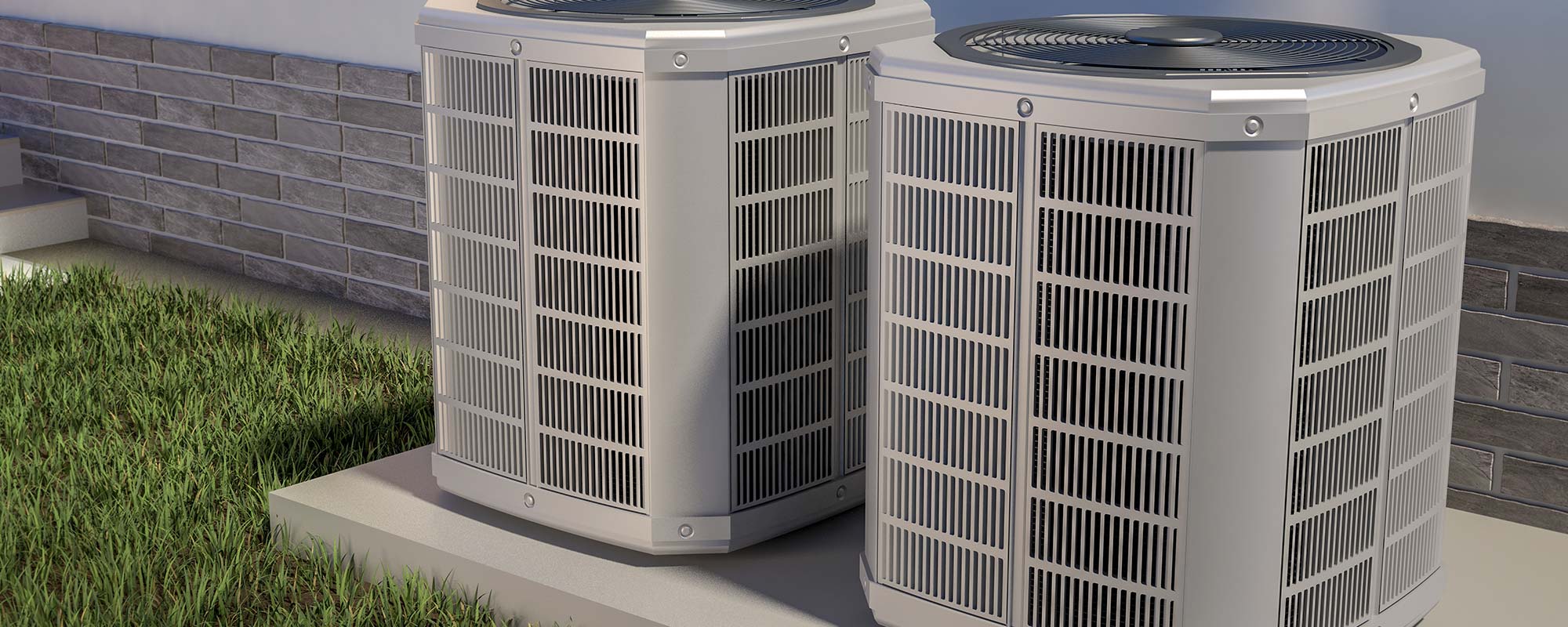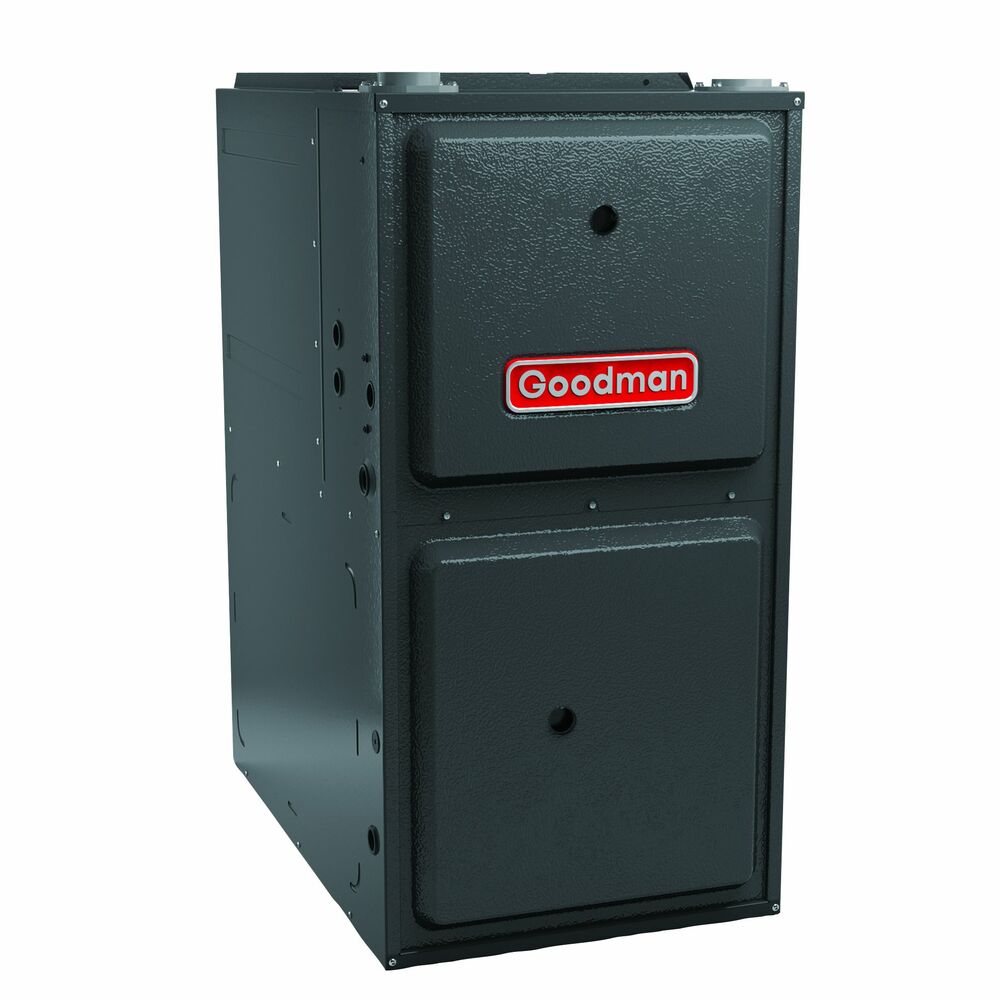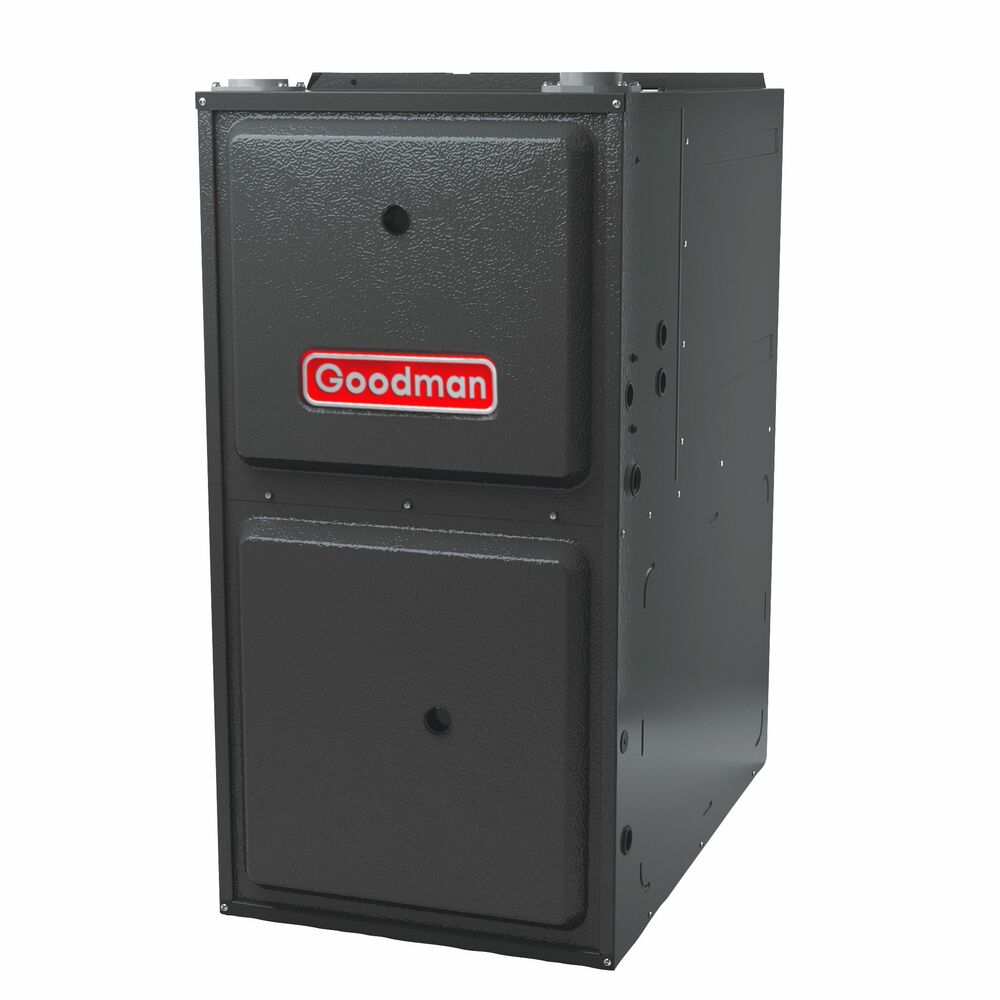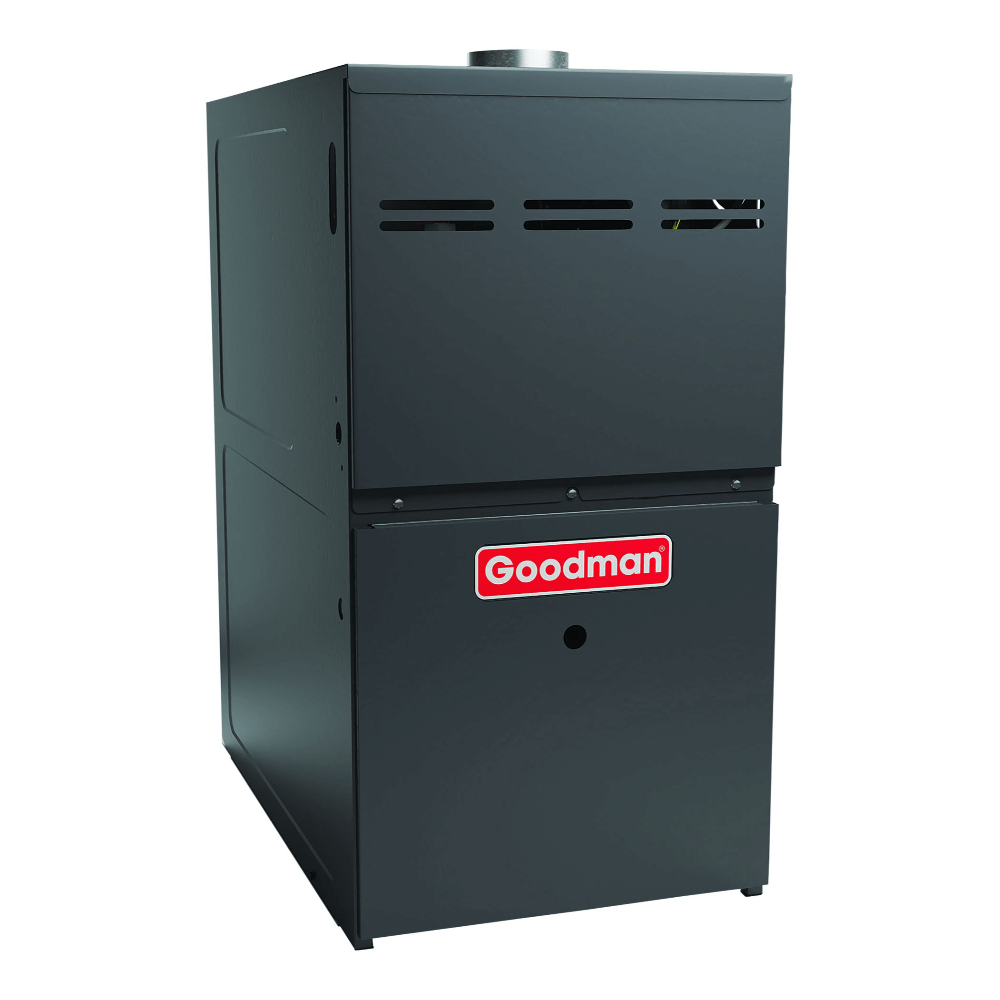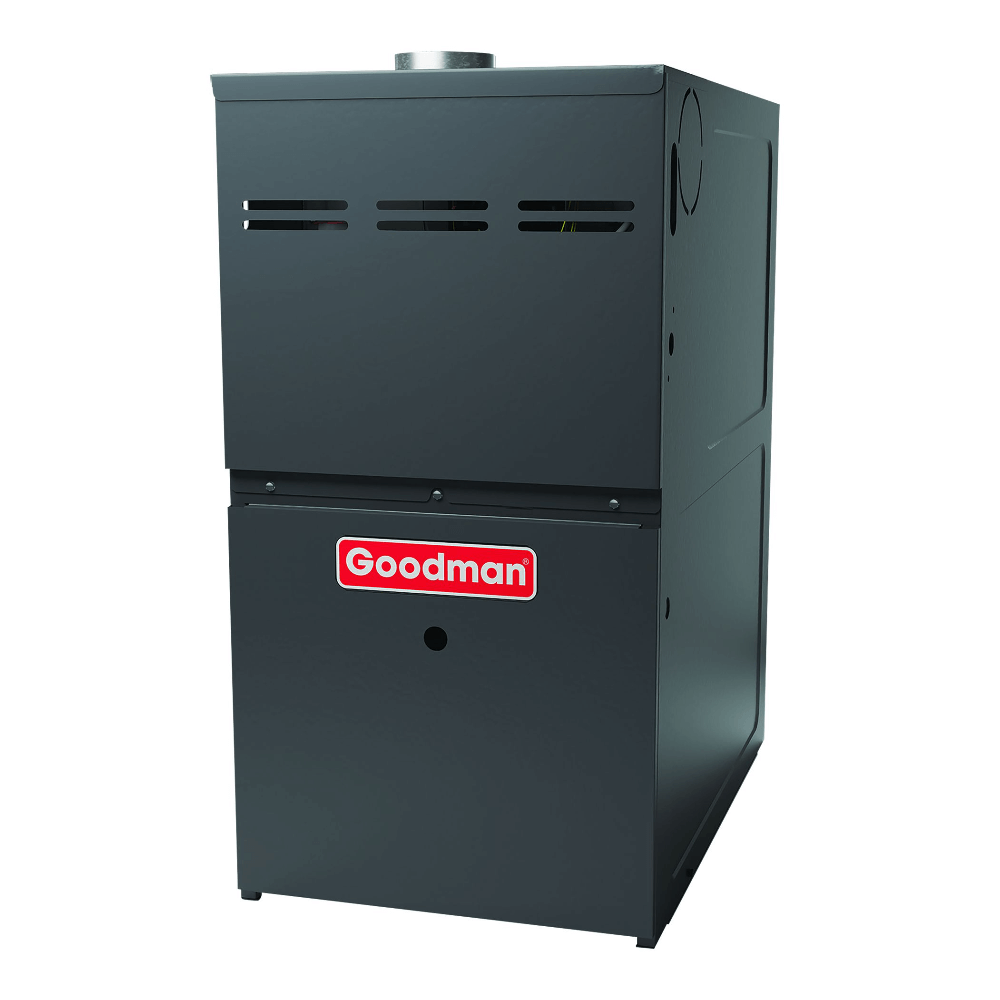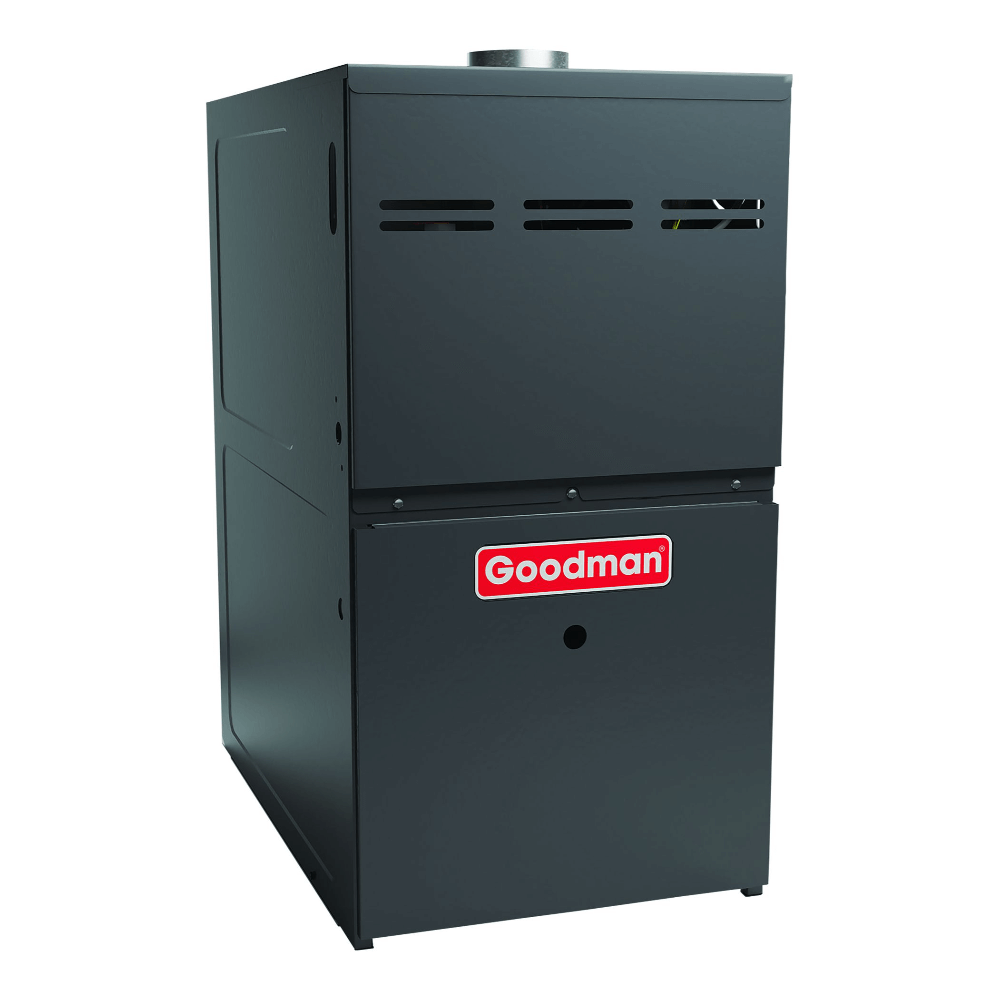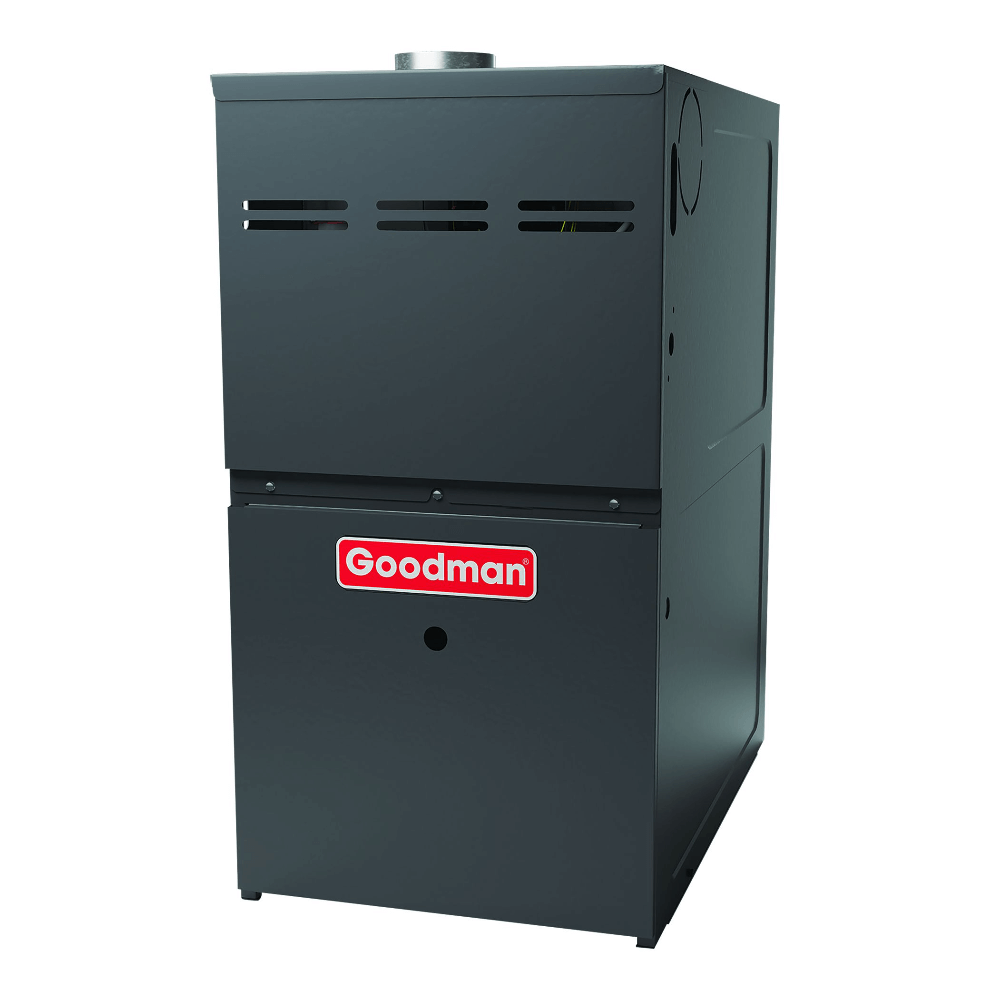Are you considering a heat pump for your home’s climate control needs? A heat pump can be an efficient, cost-effective, and environmentally friendly method of heating and cooling your home. In the U.S., heat pumps are the most common primary space heating method behind furnaces, according to a 2020 study. The variety of styles and flexible options makes heat pump systems an excellent alternative to traditional heaters and air conditioners. A heat pump could be a good option if your home uses a forced-air ducted HVAC system.
All heat pumps operate on the same principle of heat transference. Air-source, mini-splits, geothermal, and absorption heat pumps to heat and cool homes by moving heat indoors and outdoors. This method comes with several advantages and disadvantages. While heat pumps can be excellent solutions for some homes, others might benefit from conventional furnaces.
This buyer’s guide will help determine which heat pump suits your home. We’ll also cover heat pump sizing, life expectancy, factors to consider before installing a heat pump, costs, and maintenance requirements to help you make informed decisions.
Table of Contents
- What is a Heat Pump?
- Types of Heat Pump Systems
- How Does a Heat Pump Work?
- Benefits of a Heat Pump System
- Disadvantages of a Heat Pump System
- What Size Heat Pump Do I Need?
- Heat Pump Size Chart
- How Long Do Heat Pumps Last?
- Things to Consider When Choosing a Heat Pump
- Heat Pump Costs
- Heat Pump Maintenance
- Is a Heat Pump Right for Your Home?
- Frequently Asked Questions
A heat pump is a heating and cooling system that transfers heat between the inside and outside of a house or building. It is essentially a two-way air conditioner. In summer, it moves the heat out. In winter, it operates like an air conditioner in reverse, bringing the heat in.
Heat pumps are typically electric and use less energy than systems that generate heat from fuel combustion and electric coils. For instance, even highly-efficient gas furnaces waste a portion of the fuel they consume. Electric furnaces and baseboard heaters convert all their electricity into heat, but their energy usage is significantly higher than heat pumps. In fact, heat pumps consume approximately fifty percent less electricity than electric resistance heaters, according to Energy.gov.

Upgrade Your Heating with Our Heat Pumps: Click to Explore!
Several types of heat pumps are on the market for residential use, commercial use, and industrial applications. Ducted air-source heat pumps are the most common type for homes with existing ductwork and homeowners replacing central air conditioners and forced-air furnaces with heat pumps. Homes without existing ductwork can still benefit from heat pump technology by installing mini-split heat pumps. Geothermal heat pumps, including ground-source and water-source pumps, are less common in the U.S. because of extensive installation requirements and high installation costs. Still, they provide superior efficiency and energy savings. Absorption heat pumps powered by gas, solar energy, or geothermal-heated water are the least common type, but they are an excellent alternative for homes without electricity and large buildings.
-
Ducted Air-Source Heat Pumps
-
Mini Split Heat Pumps
-
Geothermal Heat Pumps
-
Absorption Heat Pumps
Ducted air-source heat pumps (ASHPs) or air-to-air heat pumps transfer heat between the air inside and outside a house. These systems utilize ductwork and vents to deliver the treated air to the house. In the summer, the heat pump absorbs heat from the home’s air and moves it outside. In the winter, the heat pump absorbs heat from the outside air and moves it inside. Heat transfer is accomplished with refrigerants.
Central/split ducted heat pump systems consist of an outdoor condenser or heat pump unit and an indoor air handler connected to the ducts. Refrigerant travels through tubing that connects the outdoor and indoor heat pump units. A blower in the air handler pushes the cooled or heated air through the home’s ducts and vents.
Packaged heat pumps combine the condenser and air handler in a single outdoor unit that connects to the ducts inside the house. Packaged units are ideal for homes without basements or crawl spaces and where space is limited.
Pros:
- Environmentally friendly
- Provide standard heating
- Dehumidify better than most central air conditioners
- Zero fuel combustion
- Uses less electricity than electric furnaces and baseboard heaters
Cons:
- Require ductwork
- Deliver less heat than combustion furnaces
Mini-split or ductless air-source heat pumps transfer heat between the air inside and outside the home with refrigerants like ducted systems, but they don’t connect to or require ductwork.
A mini-split system comprises an outdoor condenser or heat pump unit and at least one indoor air handler. Additional air handler units or heads can be installed throughout the house. Each air handler connects to the condenser. The air handler heads are typically installed high on the walls. Some styles can be installed behind ceilings to take up less space and be less conspicuous.
Pros:
- Suitable for homes without ducts and small additions to homes
- No heat loss from ductwork inefficiencies
- Some air handler heads offer remote technology
- Flexible design options
- Provide zoned heating and cooling
Cons:
- Require multiple air handler heads for whole-house temperature control
- High upfront costs when multiple air handler heads are required
Geothermal heat pumps, including ground-source and water-source heat pumps, transfer heat between the inside of a home and below the ground or water's surface. Geothermal heating and cooling takes advantage of the consistent temperatures many feet below ground and water surface levels. The heat transfer is accomplished by water or refrigerants circulating between the house and pipes buried in the earth or sunk at the bottom of a pond.
Pros:
- Extremely efficient
- Low operating costs
- Low maintenance
- Long system lifespan
Cons:
- High upfront costs and installation
- Requires substantial land or a body of water
- New technology with a lack of qualified installers
An absorption heat pump is an air-source heat pump powered by natural gas, propane, solar-heated water, or geothermal-heated water instead of electricity. Gas absorption heat pumps fueled by natural gas are the most common. Absorption heat pumps use ammonia as the refrigerant to transfer heat.
Pros:
- Can be powered by various energy sources
- Suitable for homes without electricity and large buildings
- Provide zoned heating and cooling
Cons:
- Not practical for homes with electricity
How does a heat pump work? Heat pumps don’t create heat; they redistribute heat from the air, ground, or water using refrigerants that circulate between indoor and outdoor units. Heat pumps are based on the natural propensity of heat energy to move to areas of lower temperature and pressure.
According to the second law of thermodynamics, heat always moves away from hotter objects and spaces to colder objects and spaces. Open your front door on a cold day, and the heat inside will rush out. Likewise, warm air rushes to a heat pump’s coil when the cold refrigerant flows through it. Heat pumps can absorb heat in the winter because there is energy in molecular form in the air. The refrigerant absorbs the air’s energy by offering something colder.
Air-source heat pumps operate similarly in cooling and heating modes, except the refrigerant’s flow is reversed, and the heat source differs. In both methods, cold, liquid refrigerant in the coil absorbs heat energy and the refrigerant changes to a gas. The gas is pressurized and travels to the other coil to release the heat energy with assistance from a fan. The refrigerant condenses back into a liquid as it cools. The refrigerant is then depressurized and becomes cold.

Upgrade Your Heating with Our Heat Pumps: Click to Explore!
Ducted air-source heat pump systems have two central units, one outside and one inside, similar to air conditioning systems. Each unit contains a coil, fan, refrigerant tubing, and other crucial components.
-
Outdoor Unit: This unit contains a coil and a fan. The coil operates as a condenser in cooling mode, similar to an air conditioner, and an evaporator in heating mode. The fan blows air over the coil to release heat from the refrigerant in cooling mode.
-
Indoor Unit: This unit, also called an air handler, contains a coil and fan. The coil operates as a condenser in heating mode and an evaporator in cooling mode. The fan blows air over the coil to release heat from the refrigerant in heating mode and pushes air through the home’s ducts.
-
Refrigerant: A chemical compound, generically referred to as Freon, that flows through tubes in a circuit between the outdoor and indoor units, absorbing and expelling heat
-
Compressor: The component that pressurizes and heats the refrigerant to facilitate the heat transfer and to move the refrigerant through the tubes
-
Expansion Valve: The component that reduces the pressure and temperature of the refrigerant after the heat transfer
-
Reversing Valve: The component that reverses the refrigerant’s flow to switch between cooling and heating modes
The house’s air is the heat source in cooling mode, and the heat energy transfers outside—the indoor coil functions as an evaporator, and the outside coil functions as a condenser.
Step1: Warm household air blows over the coil in the indoor unit. Cold, liquid refrigerant in the tubes absorbs the heat. The fan blows the cooled air through the home’s ducts and vents. The refrigerant evaporates into a gas as it heats up.
Step 2: The refrigerant gas travels to the outdoor unit to transfer the heat outside. First, the gas enters the compressor to be pressurized. The gas’s temperature increases as a result.
Step 3: Hot, pressurized refrigerant gas flows through the outdoor unit’s coil while a fan blows air. The heat energy stored in the refrigerant transfers to the outdoor air, and the refrigerant condenses into a liquid as it cools.
Step 4: Liquid refrigerant flows into the expansion valve to reduce its pressure. As a result, the liquid’s temperature decreases—the refrigerant cycles back into the house in a cold, liquid state to repeat the process.
The outside air is the heat source in heating mode, and the heat energy transfers inside—the outdoor coil functions as an evaporator, and the indoor coil functions as a condenser.
Step 1: Cold, liquid refrigerant in the outdoor unit’s coil absorbs heat from the outside air. The refrigerant evaporates into a gas as it heats up.
Step 2: The gas enters the compressor to be pressurized. The gas’s temperature increases as a result. The refrigerant gas travels to the indoor unit to transfer the heat inside.
Step 3: Hot, pressurized refrigerant gas flows through the indoor unit’s coil. Cold household air blows over the coil, and the heat energy in the refrigerant transfers to the indoor air. The fan blows the heated air through the home’s ducts and vents. The refrigerant condenses into a liquid as it cools.
Step 4: Liquid refrigerant flows into the expansion valve to reduce its pressure. As a result, the liquid’s temperature decreases—the refrigerant cycles back through the outdoor unit in a cold, liquid state to repeat the process.
Whether you are installing a new HVAC system or replacing a furnace, an air conditioner, or both, a new heat pump is worth considering. Heat pumps offer numerous advantages over conventional HVAC products:
-
Affordable technology
-
Clean energy
-
Customizable solutions
-
Minimal noise
Affordable Technology
The average household spends about ninety percent of its energy-related expenditures, including natural gas, propane, and electricity, on heating and cooling. Because these technologies comprise such a large portion of energy costs, homeowners are increasingly looking to upgrade to newer, more innovative, and more energy-efficient technologies like heat pumps.
Transferring heat indoors in winter makes heat pumps significantly more efficient than heaters that convert fuel into heat. Gas furnaces have efficiency ratings between 80 and 97%. These AFUE ratings represent how much energy is converted into heat. The remaining fuel is lost, mainly to exhaust gasses. In contrast, heat pumps can be over 400% efficient during cool weather and 200 to 250% efficient over an entire winter, according to The Northwest Energy Efficiency Partnership.
Electricity, a notoriously expensive heating fuel, powers most heat pumps. However, heat pumps consume far less energy than traditional heaters and can lower your energy costs. NEEP estimates average heat pump heating costs lower than propane, oil furnaces, and electric baseboard heaters. Specifically, replacing an oil furnace with an air-source heat pump could reduce your energy bill by 6,200 kWh (about $948 depending on fuel prices). Replacing an electric heater with an air-source heat pump could reduce your energy bill by 3,000 kWH (about $459 depending on fuel prices). On the other hand, natural gas heating might be slightly cheaper than an electric heat pump if the natural gas price is low, but fuel prices constantly fluctuate.
The upfront costs of installing a heat pump are higher than gas furnace installation costs, but these expenses are offset by local government and utility subsidies. Many states offer cash rebates and tax incentives for energy-efficient appliance installation. Search the DSIRE database to determine if your state provides heat pump subsidies. You might also be eligible for federal rebates up to $14,000 through the High-Efficiency Electric Home Rebate Act (HEERA), a 2022 Inflation Reduction Act component.
Clean Energy
Heat pumps have less impact on the environment than conventional space heating options through efficient energy usage and avoidance of carbon-emitting fossil fuels. Admittedly, coal power plants often produce electricity that powers heat pumps, yet heat pumps still create a smaller carbon footprint than other HVAC products. One finding suggests that switching from natural gas heating to an electric heat pump could reduce a household’s carbon emissions by 46% to 54%.
Heat pumps could eventually become the most prevalent heating system in the U.S. as states pass more legislation to protect the environment. California, for example, is moving to prohibit the sale of natural gas space and water heaters by 2030 to reduce ozone pollution.
Healthy and Safe
Heat pumps can improve a home's air quality. The air filter removes dust, pollen, and other contaminants before it cycles through the house. Depending on the air filter's MERV rating, the filter might even trap viruses and smoke.
Heat pumps also provide effective humidity control in summer and winter. Heat pumps with ECM motors dehumidify better than standard air conditioner motors, and heat pumps don’t dry out the air in heating mode like gas-fired furnaces.
Heat pumps are a safer alternative to gas-fired furnaces. There are no gas leaks, fires, explosions, or carbon monoxide poisoning risks.
Customizable Solutions
Heat pumps come in hundreds of models with thousands of configurations to suit a home’s size, layout, and heating and cooling needs. A heat pump system can replace a home’s furnace and air conditioner.
Ducted models serve an entire house using existing or newly installed ductwork. Ductless models don’t require any ductwork or vents to deliver air. Each air handler head serves one room or area, and multiple heads can be installed throughout a house. The heads can be mounted high or low on walls or installed behind ceilings.
Heat pump systems can be zoned for greater temperature control across the house’s rooms. Single-zone systems have one outdoor unit and one indoor ductless unit serving one room or area. Several separate single-zone systems can be configured with multiple heads. Multi-zone systems consist of one outdoor unit and two or more indoor units serving various rooms or areas. Multi-zone systems can utilize ducted units, ductless units, or both.
Minimal Noise
Ducted air-source heat pumps operate quietly with 40 to 60 decibels noise levels, about the same level as standard air conditioners and dishwashers. Ductless mini-splits are even quieter at 20 to 40 decibels, the noise level of a whisper.

Upgrade Your Heating with Our Heat Pumps: Click to Explore!
Heat pump systems are neither flawless nor appropriate for every house. There are drawbacks to installing a heat pump:
-
High upfront cost
-
Reliance on electricity
-
Less efficient in extreme weather
-
Require more maintenance
High Upfront Cost
Heat pumps generally cost more to install than other heating and cooling products. Heat pumps are an investment, and low operational costs offset the high upfront cost over time. System type and complexity, equipment quality, home size, and other factors determine upfront costs.
Ductless heat pump equipment and installation tend to be less than ducted systems. EnergySage reports that ductless heat pump installation costs between $3,500 and $5,000 per unit, while ducted heat pump installation costs between $12,000 and $20,000. Geothermal systems can cost as much as $50,000.
Reliance on Electricity
Though electric heat pumps are touted as a “green” heating and cooling option, a few drawbacks come with electrically powered appliances. Heat pumps are susceptible to power outages. If a storm or other disaster knocks out the power, you'll be without heat or air conditioning. Most heating and cooling equipment depends on electricity and won't function during power outages.
Expect increased electric bills with heat pump installation. Heat pumps are energy efficient, yet they consume energy nonetheless. Electricity prices constantly fluctuate, but electricity tends to be a costly fuel. On the other hand, your gas bill will decrease if you replace a gas furnace with an electric heat pump.
200-amp electrical service is standard in modern homes, enough to run a heat pump and other electrical appliances simultaneously without tripping breakers. Still, older homes with 60 or 100 amps can't accommodate large-capacity heat pumps. The alternative would be to hire an electrician to upgrade your electrical panel, a home improvement that could cost thousands of dollars.
Less Efficient in Extreme Weather
Heat pumps are less efficient during freezing weather and better suited for moderate climates. Even so, your heat pump might struggle to heat your house during cold snaps. Hybrid heating options, such as an electric strip installed in the heat pump or air handler, provide supplemental heat when the heat pump can’t keep up.
Without a dual fuel system, heat pumps are impractical for northern regions of the U.S., where temperatures fall towards zero degrees in winter. A dual-fuel system that incorporates a heat pump and a gas furnace is necessary for places like Wisconsin and Maine.
Require More Maintenance
All heating systems require regular maintenance to keep them operating efficiently. Heat pumps require more maintenance than other systems, primarily because heat pumps are used during heating and cooling seasons.
Proper sizing is essential. Undersized units struggle to maintain temperatures, and run long cycles. Oversized units heat and cool unevenly, dehumidify poorly, and turn on and off frequently. Both situations waste energy and strain the HVAC system. Contractors use a multitude of factors to determine the correct heat pump size.
Climate
Heat pump sizes are based on 47-degree weather. Your heat pump’s size should account for the temperature extremes in your area, the coldest and hottest temperatures your location typically experiences. Heat pumps are generally not recommended for a cold region such as Zone 5, but modernized “cold climate” heat pumps and dual fuel systems might be options.
Capacity
Capacity and size are synonymous with heat pumps; they measure how much heat the heat pump can transfer in one hour. Capacity is measured in tons or BTUs. One ton equals 12,000 BTUs. What does BTU stand for? BTU stands for British Thermal Units. Units with higher BTUs are more powerful and transfer more heat.
Square Footage
House size is typically considered the most crucial factor in determining heat pump capacity. Larger houses need larger heat pumps. Your home’s square footage can correlate with a range of potential sizes. Ceiling heights, insulation, and other variables should be taken into account to determine if you require the size at the top or bottom of the range. Unfortunately, there is no consensus about how square footage relates to size. Separate sources give each of the following recommendations:
-
1 ton (12,000 BTUs) for every 500 square feet
-
20 BTUs per square foot
-
30 BTUs per square foot
Manual J Load Calculation
Manual J load calculations are the most thorough and reliable method to size HVAC equipment. The standard, developed by ACCA (Air Conditioning Contractors of America), is used by HVAC professionals and contractors. The calculations are usually performed using specific computer software and incorporate square footage, layout, windows, insulation, air leakage, climate, ductwork (if applicable), number of occupants, heat-generating appliances, preferred temperature, and other variables.
Other Variables to Consider
Climate and square footage are good starting points to estimate the heat pump size your home requires, but other variables should also be factored in for a proper assessment.
Duct Efficiency
Ducts lose efficiency as they age. According to Energy Star, ducts lose twenty to thirty percent of the air blowing through them due to holes and bad connections. Ducts in unfinished basements and attics without climate control are also less efficient. Houses with duct inefficiencies require larger heat pumps, while homes with sealed and insulated ducts can accommodate smaller heat pumps.
Windows and Doors
The quality, age, and number of windows and doors in your home impacts heat pump size. A bigger heat pump might be required to counteract drafts from old doors, single-pane windows, or many windows.
Shade and Sunlight
Houses that receive full sunlight all day receive more thermal energy than houses shaded by trees; sunny homes require less heating power in winter but more cooling power in summer.
Ceiling Height and Ceiling Fans
BTU estimates based on square footage assume houses have eight-foot ceilings. Cubic footage should be considered for a more accurate calculation in homes with higher ceilings. Hot air naturally rises, so homes with vaulted or cathedral ceilings require more heating power in winter.
The number of levels in a house is another variable to consider. Upper levels insulate lower levels. Consequently, a sprawling ranch-style home will need a larger heat pump than a two-story house because it has more walls and ceilings through which heat is lost.
Ceiling fans throughout a house help control temperatures by distributing the air and might allow a smaller heat pump. They can be set to push down the warm air from the ceiling or pull up cold air from the floor level.
Insulation
The amount, quality, and age of a home’s insulation can increase or decrease a size estimate. Insulation keeps heat inside in winter and outside in summer. Houses with modern, high-quality insulation or more insulation retain temperatures better and can accommodate smaller heat pumps.
Use of Space
Additional factors such as the number of people and the amount of heat- generating appliances, such as ovens and dryers, in a household can reduce or increase the heat pump’s capacity.

Upgrade Your Heating with Our Heat Pumps: Click to Explore!
Your home’s square footage can give you a reasonable size estimate, though there are many other factors to consider. Find the square footage on closing documents or property records, or calculate it by multiplying the length and width of each room and adding the results. Then, consult the chart below.
| Home size (square feet) | Tons | BTUs |
|
500 square feet |
1 ton |
12,000 BTUs |
|
1,000 square feet |
2 ton |
24,000 BTUs |
|
1,500 square feet |
3 ton |
36,000 BTUs |
|
2,000 square feet |
4 ton |
48,000 BTUs |
|
2,500 square feet |
5 ton |
60,000 BTUs |
|
3,000 square feet |
6 ton |
72,000 BTUs |
How long do heat pumps last? Heat pumps have an average lifespan of ten to fifteen years. They don’t last as long as furnaces and air conditioners because they work year-round. The manufacture dates are encoded in the serial numbers on the data plates of most heat pumps.
Heat pumps, like all machines, have estimated life spans that are influenced by various factors. Heat pump life expectancy is around ten to fifteen years, but your heat pump could last as few as eight years or as many as twenty.
Many factors that influence a heat pump’s lifespan are within your control. Ensure you get the most extended life out of your heat pump by understanding which factors affect it and taking the necessary steps and precautions. Heat pump size, the amount of usage, your home’s location, proper installation, and regular maintenance are the main factors affecting heat pump life expectancy.
Size
Undersized and oversized heat pumps have shorter lifespans because they work harder than they are designed to work. Undersized heat pumps run for longer cycles, and oversized heat pumps turn on and off frequently. Both situations put additional strain and wear and tear on the systems.
Usage
Overuse and incorrect use shorten heat pump life expectancy. Using your heat pump when the windows are open causes it to run more. Your heat pump will also run more if the unit is incorrectly sized or the house is poorly insulated. Overworked heat pumps don’t last as long as they should.
Location
The home’s physical location and climate can shorten a heat pump’s lifespan. Heat pumps in cold regions don’t last as long because they are less efficient in freezing conditions and have to work harder. Heat pumps in coastal areas also have shorter lifespans because the salty air is corrosive to their components. Heat pumps in inland regions with moderate climates last the longest.
Proper installation and maintenance
Heat pumps that are installed correctly by professional technicians tend to last longer. It’s also essential to properly maintain a heat pump. Heat pump maintenance consists of regular air filter changes, removal of debris and ice from around the outdoor unit, and annual professional cleanings and servicing.
A heat pump can be an excellent alternative to traditional heating and cooling methods. Heat pumps are energy-efficient, environmentally friendly, and provide year-round temperature control. Still, there are many things to consider when choosing a heat pump, such as the style that suits your home, the size your home requires, and the efficiency rating you need. Assessing your current heating and cooling system and climate will help you answer most of these questions. You’ll also want to consider what rebates and incentives are available to offset the cost and heat pump options to enhance performance.
Current System
Your current heat and cooling systems will help you determine which heat pump style to lean towards. Opt for a split-system heat pump with indoor and outdoor components if you currently have a forced-air system with a furnace and air conditioner, but verify that the existing indoor and outdoor elements are heat pump compatible. Look at mini-split styles if your house uses baseboard heaters, radiators, or some other ductless system. If you’re building a new home, investigate the pros and cons of every heat pump style, split-systems, packaged units, and mini-splits.
Efficiency
Heat pump efficiency is expressed by SEER (seasonal energy efficiency rating) and HSPF (heating system performance factor). SEER measures cooling efficiency, and HSPF measures heating efficiency. Units with higher SEER and HSPF ratings are more efficient. Though there is no correlation between the two rating systems, units with higher SEER tend to have higher HSPF. The 2023 federal minimum efficiency standards are 14 SEER for northern regions, 15 SEER for southern areas, and 8.8 HSPF for all regions.
Look for a high SEER rating if you live in a warm climate with a more extended cooling season and a high HSPF rating if your environment is cold with a long heating season. Highly efficient heat pumps are more expensive but save you more money on energy costs. Even lower-efficiency heat pumps can reduce energy costs if replacing an old, inefficient system. Look into local and federal heat pump rebates and tax incentives for additional savings.
Sizing
Correct heat pump sizing is a must. An undersized or oversized heat pump is inefficient and sustains more wear and tear, which could lead to repairs and a shortened lifespan. Heat pump size, called capacity, is measured in BTU/h (British Thermal Units per Hour) or tons. One ton equals 12,000 BTU/h.
There are charts online to estimate heat pump size based on your home’s square footage, but you’ll get the best results if you bring a professional into your home to do a load calculation with a trusted method, such as Manual J.
You can get away with a smaller heat pump if you keep a backup heating system such as a furnace. Heat pumps generally require less capacity than furnaces because they’re more efficient.
Climate
Heat pumps are the predominant heating and cooling system for warm-zone houses. Standard heat pumps work well in locations where temperatures rarely drop below thirty-two degrees Fahrenheit. The National Association of Home Builders reports that nearly three-quarters of homes in the East South Central and South Atlantic states rely on heat pumps.
Heat pumps are less prevalent in northern states. Heat pumps can be used in cold regions, but installing one requires additional forethought. Choose a heat pump rated to the lowest temperature your area experiences. Some can work to 17 degrees, and cold-climate heat pumps work efficiently down to 5 degrees and possibly lower. Another option is a dual-fuel system that incorporates a furnace for times when an electric heat pump becomes inefficient. Work with a local contractor who knows your climate and what will work best.
Compressor Type
The compressor is the heart of a heat pump system. It pumps heat-transferring refrigerant through the system. Basic single-speed compressors are the most affordable. They run at one speed when they are on. Two-speed compressors are pricier. They can run at high speed when necessary but typically run at low speed for longer cycles. Two-speed compressors have better temperature and humidity control. Variable-speed compressors are the most expensive. They can calibrate to dozens of speeds and offer the best temperature and humidity control and energy efficiency.
Rebates and Incentives
New heat pump installation might make you eligible for local government and utility subsidies. Search the DSIRE database for your state’s efficiency incentives. You might be able to take advantage of federal rebates and tax credits, too. The High-Efficiency Electric Home Rebate Act (HEERA), a 2022 Inflation Reduction Act component, offers rebates of up to $14,000 for installation and equipment costs for heat pump systems and other electrification projects.
Other Factors To Consider
These additional factors include performance-enhancing innovations and noise and efficiency considerations.
-
Demand Defrost Control: Frost forms on the outdoor coil amid low temperatures and high humidity levels. The heat pump’s defrost cycle reverses its operation to thaw the coil with hot refrigerant. In other words, the heat pump stops heating and enters cooling mode during the defrost cycle. Most heat pumps use timed defrost cycles that begin when conditions are right for frost to form. Demand defrost control begins defrosting when ice forms on the coil, reducing energy usage and time spent defrosting.
-
Desuperheater: A desuperheater recovers the heat usually expelled outside when the heat pump is in cooling mode and uses it to heat the home’s water. A desuperheater is two to three times more efficient than a standard electric water heater, according to Energy.gov.
-
Decibels: The heat pump’s fans and compressor produce noise. Consider the outdoor noise rating, and choose a heat pump with fewer decibels if noise is a concern.
-
Location of Outdoor Unit: The unit’s location affects its noise level and efficiency. Locate the unit away from windows and bedrooms for less noise. Protect the unit from high winds that could affect its defrosting and decrease efficiency. Locate the unit where it’s protected by the house or break the wind with a row of shrubs or a fence.
Size, type, and brand determine a heat pump's cost. Besides the unit's cost, installation costs are determined by the installation requirements, labor rates, permit fees, additional installation materials, and the time of year.Heat pump unit and installation costs range from $1,500 for a mini-split to $36,000 for a geothermal system. Energy savings can recoup some of a heat pump's costs over the long term. Homeowners can also take advantage of rebates available through the Inflation Reduction Act and local government and utility subsidies to offset some upfront costs.
| Type | Unit Cost | Installation Cost |
|
Air-source |
$2,000 - $5,500 |
$1,300 - $2,000 |
|
Geothermal |
$3,000 - $6,000 |
$10,000 - $30,000 |
|
Ductless Mini-Split |
$1,000 - $3,500 |
$500 - $1,500 |
|
Gas Absorption |
$3,000 - $6,000 |
$1,300 - $2,000 |
Air-Source
An air-source heat pump is generally the most affordable if the home has existing ductwork. When switching from traditional heating and cooling methods, air-source heat pumps deliver long-term energy savings. Unit and installation costs for an air-source heat pump run between $3500 and $7500.
Geothermal
Geothermal heat pumps have high upfront costs due to extensive installation processes. Ground-source heat pump installation requires digging numerous four-foot-deep trenches and laying a network of pipes. If you can absorb the high upfront costs, you’ll see the most significant long-term energy savings compared to nearly every other system. Unit and installation costs for a geothermal heat pump system range from $13,000 to $36,000.
Ductless Mini Splits
A ductless mini-split is typically the most affordable option for homes without existing ductwork, few zones to heat and cool, or small square footage. Mini-split installation is simple, and labor costs are low. Unit and installation costs for a mini-split system are between $1,500 and $5,000.
Gas Absorption Heat Pump
Gas absorption heat pumps are generally less efficient, with higher energy costs than electric heat pumps. Gas absorption heat pumps are sensible choices for homes without electricity, large homes over 4,000 square feet, and buildings with multiple zones. Gas absorption heat pumps cost between $4,500 and $8,000, including installation.

Upgrade Your Heating with Our Heat Pumps: Click to Explore!
Proper maintenance keeps a heat pump running efficiently, prolongs its lifespan, and saves money on energy costs. Energy Saver says neglected heat pumps consume ten to twenty percent more energy than maintained ones. Ducted air-source heat pump maintenance requirements are similar to central air conditioning requirements. The chief distinction is that heat pumps require year-round attention during cooling and heating seasons. If your heat pump replaces your forced-air furnace, the amount of maintenance might increase slightly. Homeowners can complete basic heat pump maintenance tasks once a year. In addition, heat pumps should be professionally serviced and inspected every year.
Regular air filter changes are one of the simplest and most important tasks for homeowners. How often you change an air filter varies, but generally, filters should be changed every one to three months. Complete these additional maintenance tasks at least once a year:
-
Clean the coils and fans
-
Remove vegetation and debris surrounding the outdoor unit
-
Clean the supply and return vents
-
Check for blockages in the drain line
During the yearly professional inspection, a technician will check the refrigerant’s charge and fill it if needed, check for refrigerant leaks, lubricate motors, inspect electrical connections, and more.
If you’re searching for a better alternative to conventional heating and cooling systems, a heat pump might be it. They are energy efficient, environmentally friendly, and safe for your family. Various heat pump styles, configurations, and options make heat pumps suitable for homes with and without existing ductwork. Federal and local rebates and incentives help offset the upfront costs of buying and installing a new heat pump. Though most heat pumps are inefficient heaters in cold climates, dual-fuel systems and cold-climate heat pumps allow people in northern regions to use heat pump technology. Consult a professional to advise you further on which heat pump is right for you.
If you are shopping for a new heat pump system, The Furnace Outlet can help. We specialize in direct-to-consumer heating and cooling equipement and offer the lowest prices on residential HVAC supplies online. Please contact our experts with any questions or concerns you may have, and we will be happy to help.
| Ducted Air-Source Heat Pump | Mini Split Heat Pump | Geothermal Heat Pump | Absorption Heat Pump | |
|
Efficiency |
400% |
400% |
300% - 600% |
88% - 146% |
|
System Lifespan |
10-20 years |
10-30 years |
20-50 years |
10-15 years |
|
System Cost |
$2,000 - $5,500 |
$1,000 - $3,500 |
$3,000 - $6,000 |
$15,000 - $20,000 |
|
Installation Cost |
$1,300 - $2,000 |
$500 - $1,500 |
$10,000 - $30,000 |
-- |
|
Pros |
|
|
|
|
|
Cons |
|
|
|
|
Can a heat pump cause carbon monoxide?
No, electric heat pumps don’t emit carbon monoxide or pose any risk of carbon monoxide poisoning. However, dual-fuel systems that incorporate gas furnaces pose carbon monoxide risks.
Which heat pump type is the most common?
Air-source heat pumps that transfer heat between the home and outside air are the most common. Air-source heat pumps are available in ducted and ductless models.
Can a heat pump replace a furnace?
Yes, heat pumps can replace furnaces since they provide heating and cooling, but it’s not always a wise decision. Heat pump installation might be a good option if you’re replacing an electric furnace and your air conditioner is nearing the end of its lifespan.
Switching from a gas furnace to a heat pump might not be economical. Gas furnaces are more efficient heaters, and fuel prices are typically cheaper than electricity.
Will a heat pump work in cold weather?
Yes, heat pumps can heat homes during cold weather. Heat pump efficiency diminishes as temperatures drop below 47 degrees Fahrenheit. Heat pumps in cold climates have additional features that allow them to work at below-zero temperatures, including variable-speed compressors, flash injection, and cold-weather refrigerants.

